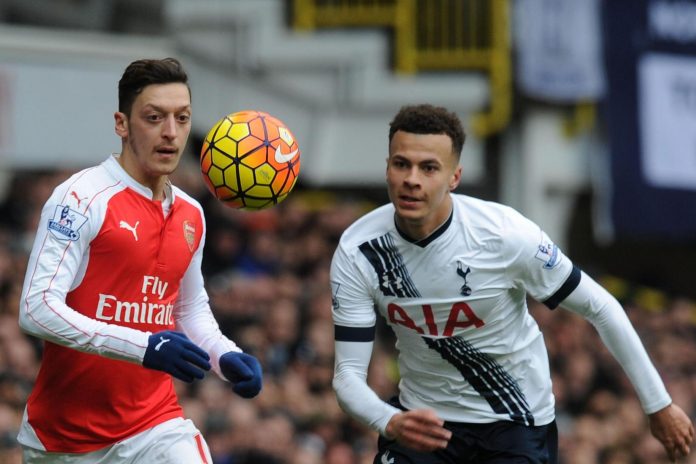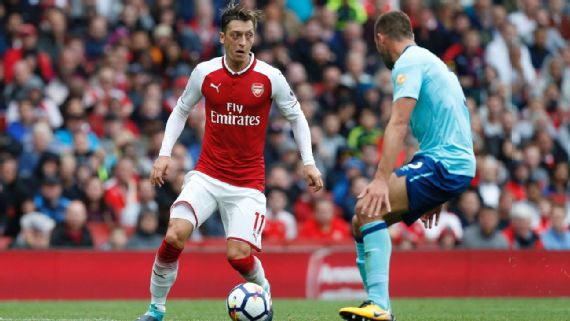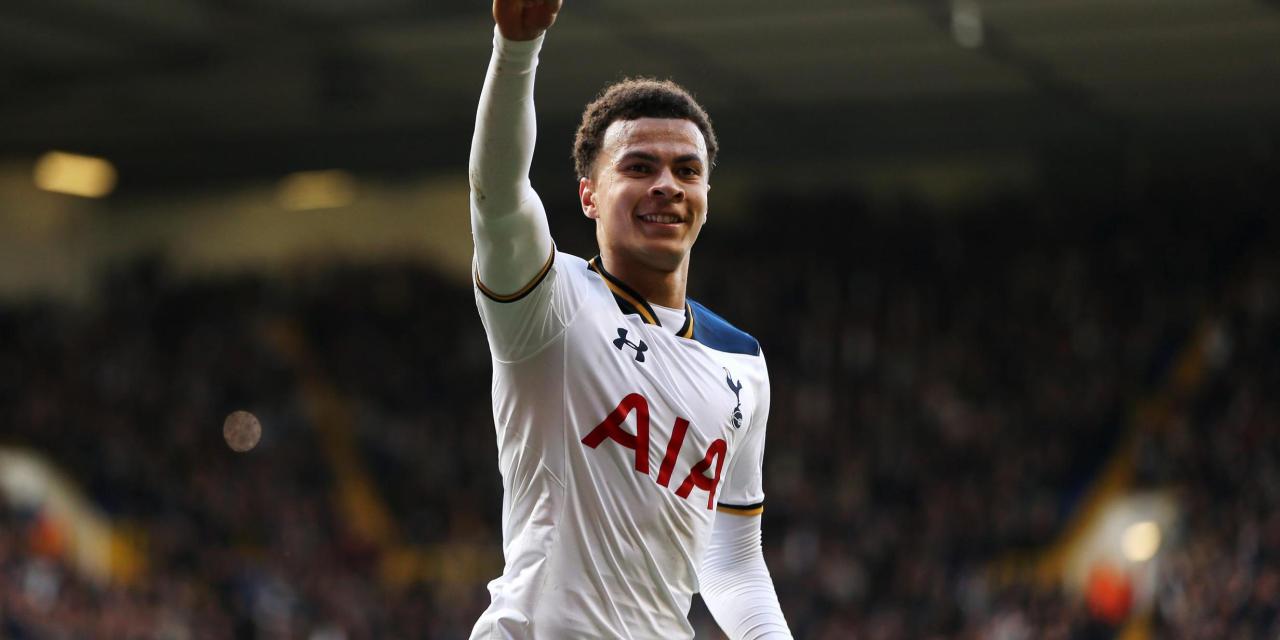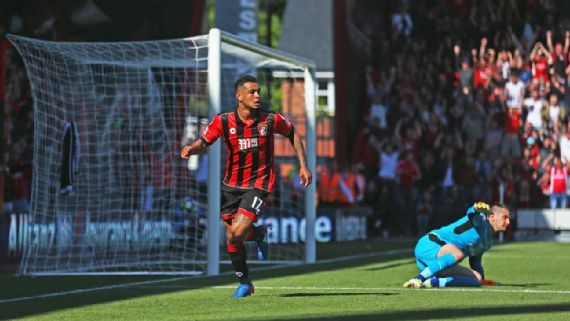Just in case you’d managed to forget about him, former Tottenham and Aston Villa manager Tim Sherwood emerged from the shadows this week to provide his views on youth football in a television debate show. One of his complaints, among many others, was that too many youth footballers in the Premier League consider themselves No. 10s.
This was a particularly peculiar complaint considering one of English football’s failings over the past few decades is the inability to produce talented, creative, gifted No. 10s capable of roaming between the lines. Incidentally, Sherwood has previously said that players “call themselves No. 10s” only “because they don’t score enough goals.”
But a cursory glance across the Premier League reveals a huge variety of players fielded in the No. 10 role so far this season — from those who never score to those who can’t stop scoring. Below are five players who play very different No. 10 roles.
The driving midfielder: Steven Davis, Southampton
There’s a type of No. 10 that is unquestionably a midfielder rather than a forward. Southampton’s Steven Davis, for example, has enjoyed an excellent start to the campaign playing at the top of the Saints’ midfield trio, leading by example while wearing the captain’s armband. He scored an early winner at Selhurst Park last weekend.
Davis is more of a box-to-box player, a runner who provides his teammates with positive balls into the final third and dynamic off-the-ball movement to prompt quick passing combinations.
That Selhurst Park winner, though, was very much the exception to the rule. While a useful midfielder and a perennially underrated footballer, Davis’ end product is sorely lacking, and his goal-scoring return of 10 goals in 172 Premier League appearances for Southampton is somewhat pitiful, even when considering he’s usually been fielded in a deeper starting position.
In this role, Davis is a very British type of No. 10, a driving midfielder pushed into a more advanced position. He doesn’t boast genuine creativity, he’s not wonderfully gifted in possession, but his energy and attacking intent mean he’s arguably more suited to this advanced role despite the fact that his goal-scoring and assisting figures will never be impressive.
The outright assister: Mesut Ozil, Arsenal
Manager Arsene Wenger’s switch to a 3-4-3 system means Ozil has generally been fielded as more of an inside-right in recent months, but for the vast majority of his Arsenal career the German has been fielded as Arsenal’s No. 10 in a 4-2-3-1 system.
From that position, Ozil’s role is almost solely about the simple concept of playing the final pass, having ghosted into unnoticed positions between the lines. Ozil doesn’t generally contribute much in deeper positions — he doesn’t drift into midfield to dictate play, nor is he particularly impressive in terms of his goal scoring. Ozil is solely about assists.
In that respect, Ozil is — sometimes — unbeatable. He has been the leading assister in Bundesliga, La Liga, Premier League and Champions League campaigns, and few other players are so overwhelmingly selfless in the final third, eternally looking to feed teammates rather than shoot. He’s a very Arsenal player.
Yet this also remains one of Ozil’s shortcomings. When Ozil was fielded behind Olivier Giroud, a player who likes to hold up possession and wait for runners to sprint past him, Arsenal often lacked penetrative runs in the final third, depending upon movement from wide or Aaron Ramsey’s bursts from deeper.
The midfielder-forward hybrid: Dele Alli, Tottenham Hotspur
Dele Alli grew up considering himself a midfielder. He idolised Frank Lampard and Steven Gerrard, the two obvious choices considering Alli’s position and age, and immediately impressed at Tottenham in 2015 with driving midfield runs and trickery in tight spaces.
Yet the more Alli plays, the less he seems to be a midfielder. He boasts a superb relationship with Harry Kane, and often isn’t merely just playing off Kane but is making runs past him — even when Spurs are knocking the ball around in defence. Alli has become a “final third” player, and he hit 18 goals last season, an incredible tally for someone not considered a proper striker.
No one entirely knows what to make of Alli. “In the box, he looks like a striker, and outside the box, he plays like a midfielder,” says Tottenham manager Mauricio Pochettino.
Alli himself says he’s “a cross between Gerrard and Yaya Toure,” although that raises further questions considering both have been deployed as their side’s deepest, and most advanced, midfielders at various stages in their careers. Alli is the Gerrard of 2009 rather than 2014, and the Toure of 2014 rather than 2009.
Alli is therefore the purest No. 10 on this list — not quite a midfielder, not quite a forward, he encapsulates the original point of the role.
The second striker: Joshua King, Bournemouth
Very few people predicted King’s stunning run of form for Bournemouth last season. He scored 16 goals, having managed six the previous campaign, and before that he managed an underwhelming total of just five in 64 games throughout his spell with Blackburn Rovers. But suddenly the Norwegian seemed like a good all-round forward — powerful, pacey, ruthless.
King has been deployed in a number of roles by manager Eddie Howe — sometimes wide-left, sometimes up front. But in recent weeks King has been fielded as a No. 10 behind Jermain Defoe. In a world where lots of players who like playing deeper have been pushed forward to become the main centre-forward, King is very much the opposite.
“The manager knows my favourite position is the No. 9,” King said last year. “I think I showed that last season as well, but we have so many good strikers. When he asks me to play No. 10, it is not like I am angry or anything, because I just want to help the team. If the manager thinks I am helping by playing as a 10, then that’s what he wants and what he believes in.”
But it’s clear King very much considers himself a centre-forward. Therefore, Howe is effectively playing a strike partnership, with King and Defoe upfront.
The defensive forward: Shinji Okazaki, Leicester City
In one sense Okazaki is another King — a centre-forward fielded behind a quick striker, roaming the channels and firing powerful shots toward goal. But the Japanese forward is very different.
After all, Okazaki isn’t a great goal threat. Even when Leicester won the league with him a regular in the side, he managed just five goals all season. Last season he managed just three. Admittedly, Okazaki has started this season with two goals in four league appearances, but his finishing is frequently unconvincing — even when he scores, the ball seems to scruffily bobble over the line.
Okazaki, in truth, isn’t really a forward at all in this system. Yes, he’s Jamie Vardy’s closest support — but Okazaki’s most noticeable contributions are when the opposition are in control of possession. He presses and harries to start the defensive pressure, effectively acting as a third central midfielder to prevent Leicester being overrun in that zone.
His introduction shortly after half-time in the midweek Carabao Cup victory over Liverpool completely transformed Leicester, and he’s essentially the man who makes this system work properly. By far the least glamourous type of player fielded in the No. 10 role, Okazaki has nevertheless essentially created his own type of No. 10, based not around assisting or scoring, but pressing.




































